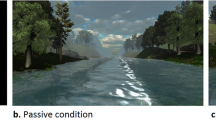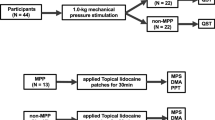Abstract
OUR investigations of various alleged extra-sensory phenomena (ESP) over the past three years are reported here, in particular psychokinesis, metal-bending, psychic healing and dowsing. One of our aims was to search for unusual electromagnetic (EM) radiation emitted by subjects while they were achieving or trying to achieve the phenomena. The quest for EM concomitants of ESP is based on our deduction that it is the only known force that could conceivably be involved (ref. 1 and J.G.T. and E. Balanovski, unpublished). In looking for EM signals emitted by people during alleged ESP events we are therefore testing the reality of the corresponding phenomena. There might be no paranormal phenomena at all, so that a search for abnormal EM effects would automatically fail. If we assume that the present evidence for ESP is not firm either way, then its EM characteristics are highly relevant to resolving that problem. If no EM signal were found, this would question the reality of the phenomena whereas suitably strong EM signals would support the claim that ESP effects were occurring. This can be quantified if the sensitivity of subjects to incoming EM radiation is ascertained; for example, sensitivity at least down to the levels of any paranormal emission from others would be necessary for telepathy to occur. We find no abnormal EM signals during the occurrence of supposed ESP phenomena.
This is a preview of subscription content, access via your institution
Access options
Subscribe to this journal
Receive 51 print issues and online access
$199.00 per year
only $3.90 per issue
Buy this article
- Purchase on Springer Link
- Instant access to full article PDF
Prices may be subject to local taxes which are calculated during checkout
Similar content being viewed by others
References
Taylor, J. G. Superminds (Macmillan, London, 1975).
Cazzamali, F. G. Psichiat. Neurol. 1, I (1933) and refs therein.
Vsiliiev, L. L. Experiments in Distant Influence (ed. Gregory, A.) (Wildwood House, London, 1976).
Puthoff, H. & Targ, R. Nature 252, 602–607 (1974).
Collins, H. & Pamplin, B. Nature 257, 8 (1975).
Taylor, J. G. Nature 254, 472 (1975).
Enander, B. & Larson, K. Research Reports Trita-Tet 7505, 7506, 7701, Royal Institute of Technology, Stockholm, 1976 and 1977).
White, R. M. J. appl. Phys. 34, 3559–3567 (1963).
Foster, K. R. & Finch, E. D. Science 185, 256–258, (1974).
Lin, J. C. J. microwave Pow. 11, 295–298 (1976).
Author information
Authors and Affiliations
Rights and permissions
About this article
Cite this article
BALANOVSKI, E., TAYLOR, J. Can electromagnetism account for extra-sensory phenomena?. Nature 276, 64–67 (1978). https://doi.org/10.1038/276064a0
Received:
Accepted:
Issue Date:
DOI: https://doi.org/10.1038/276064a0
Comments
By submitting a comment you agree to abide by our Terms and Community Guidelines. If you find something abusive or that does not comply with our terms or guidelines please flag it as inappropriate.



